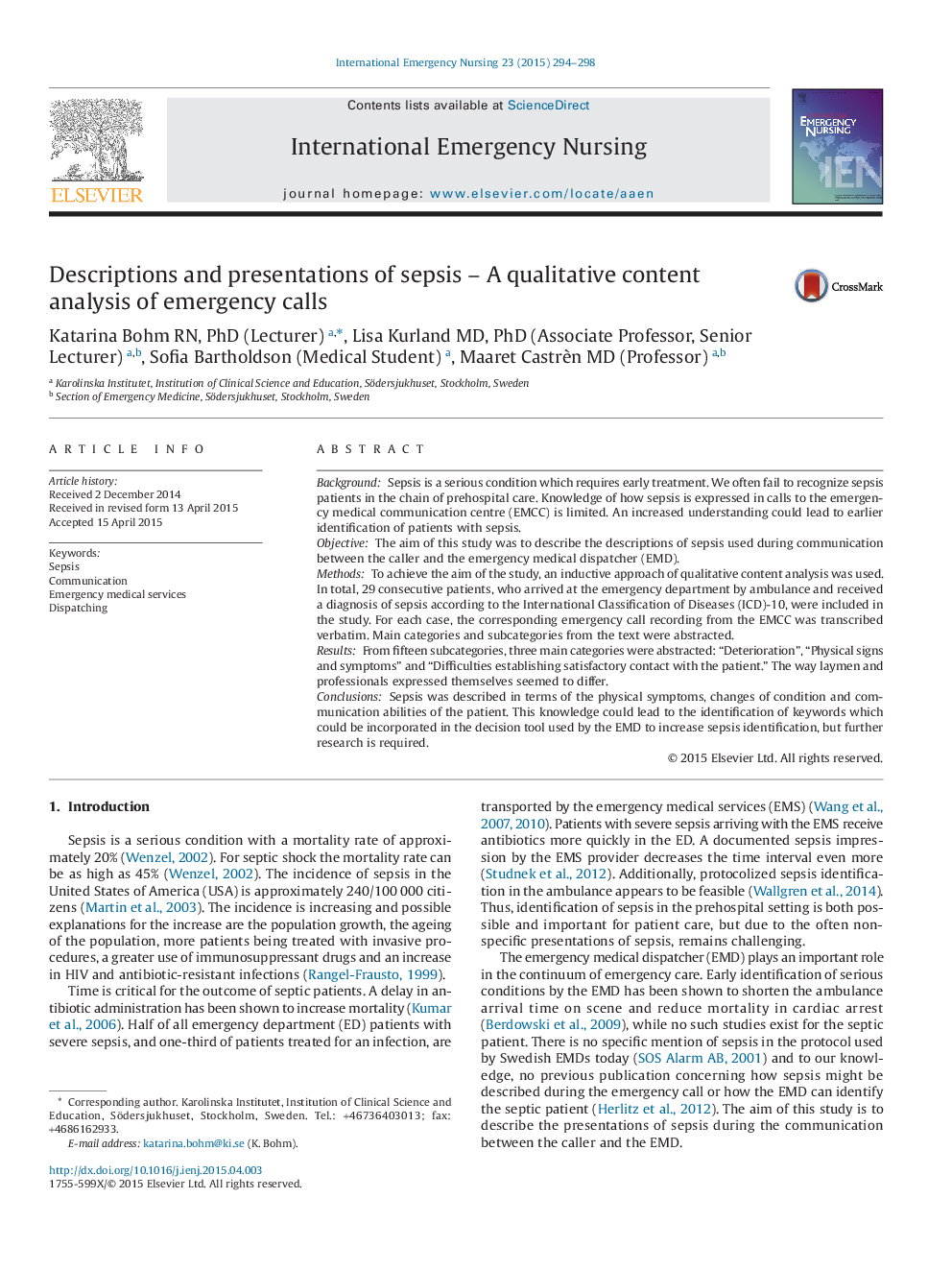| Article ID | Journal | Published Year | Pages | File Type |
|---|---|---|---|---|
| 2608138 | International Emergency Nursing | 2015 | 5 Pages |
•Sepsis was described in terms of physical symptoms and changes of behaviour.•Sepsis was also described as communication abilities of the patient•Descriptions of sepsis differ between laymen and health care professionals.•Different descriptions challenge the adaption ability and flexibility of the EMD.
BackgroundSepsis is a serious condition which requires early treatment. We often fail to recognize sepsis patients in the chain of prehospital care. Knowledge of how sepsis is expressed in calls to the emergency medical communication centre (EMCC) is limited. An increased understanding could lead to earlier identification of patients with sepsis.ObjectiveThe aim of this study was to describe the descriptions of sepsis used during communication between the caller and the emergency medical dispatcher (EMD).MethodsTo achieve the aim of the study, an inductive approach of qualitative content analysis was used. In total, 29 consecutive patients, who arrived at the emergency department by ambulance and received a diagnosis of sepsis according to the International Classification of Diseases (ICD)-10, were included in the study. For each case, the corresponding emergency call recording from the EMCC was transcribed verbatim. Main categories and subcategories from the text were abstracted.ResultsFrom fifteen subcategories, three main categories were abstracted: “Deterioration”, “Physical signs and symptoms” and “Difficulties establishing satisfactory contact with the patient.” The way laymen and professionals expressed themselves seemed to differ.ConclusionsSepsis was described in terms of the physical symptoms, changes of condition and communication abilities of the patient. This knowledge could lead to the identification of keywords which could be incorporated in the decision tool used by the EMD to increase sepsis identification, but further research is required.
